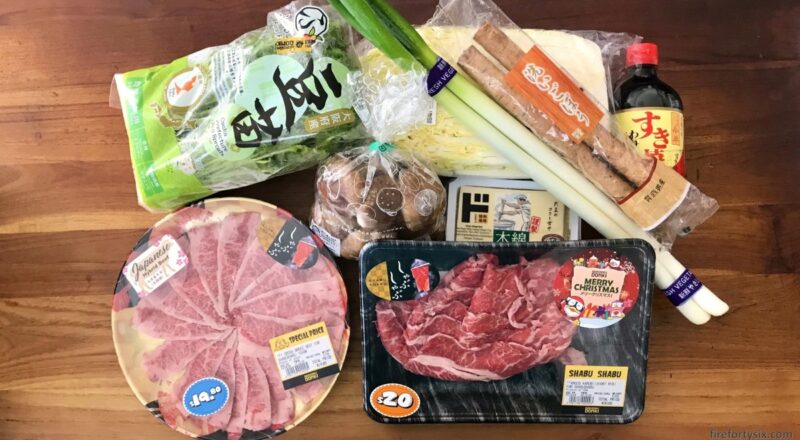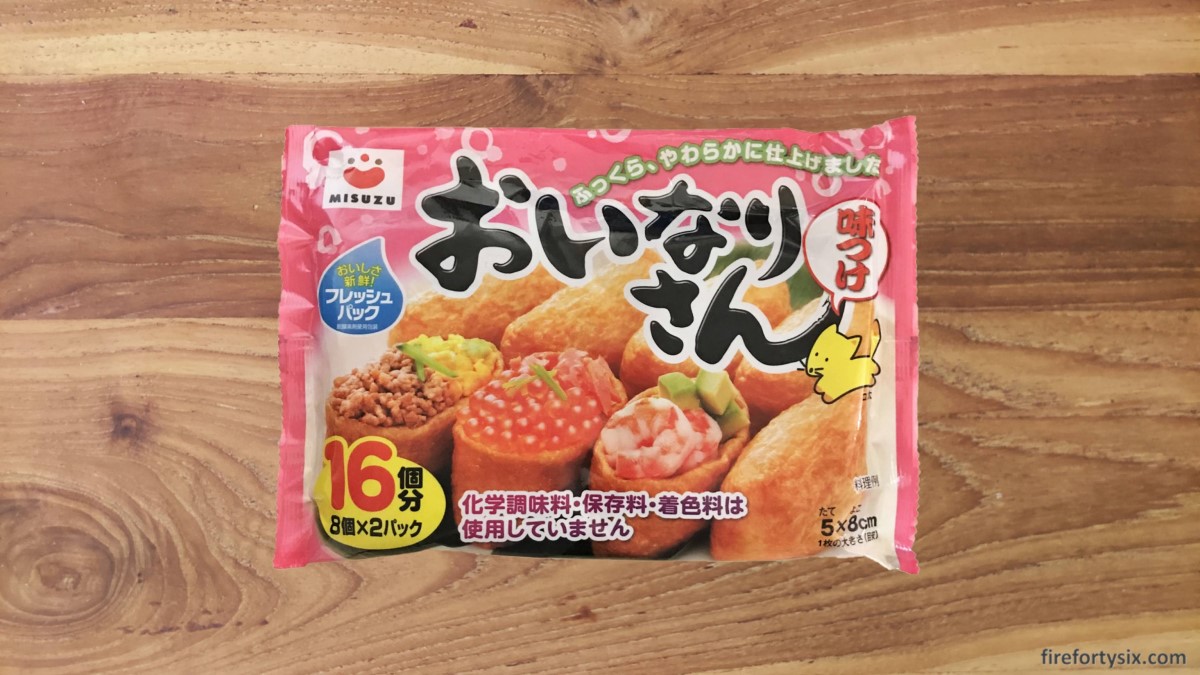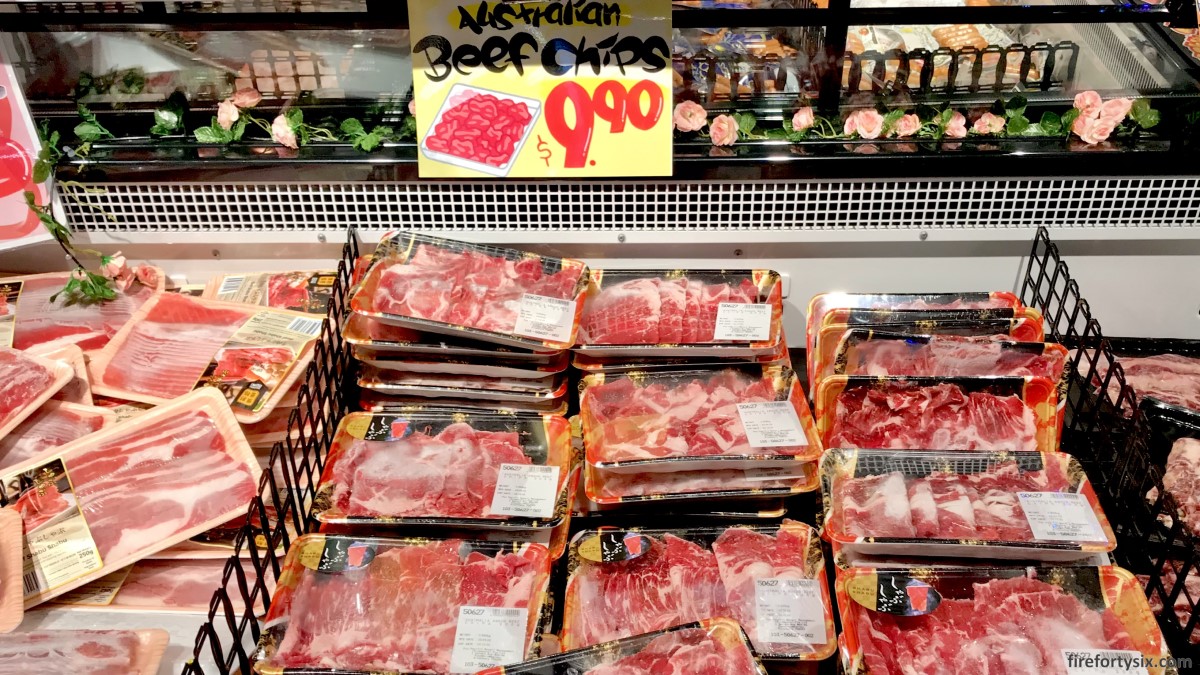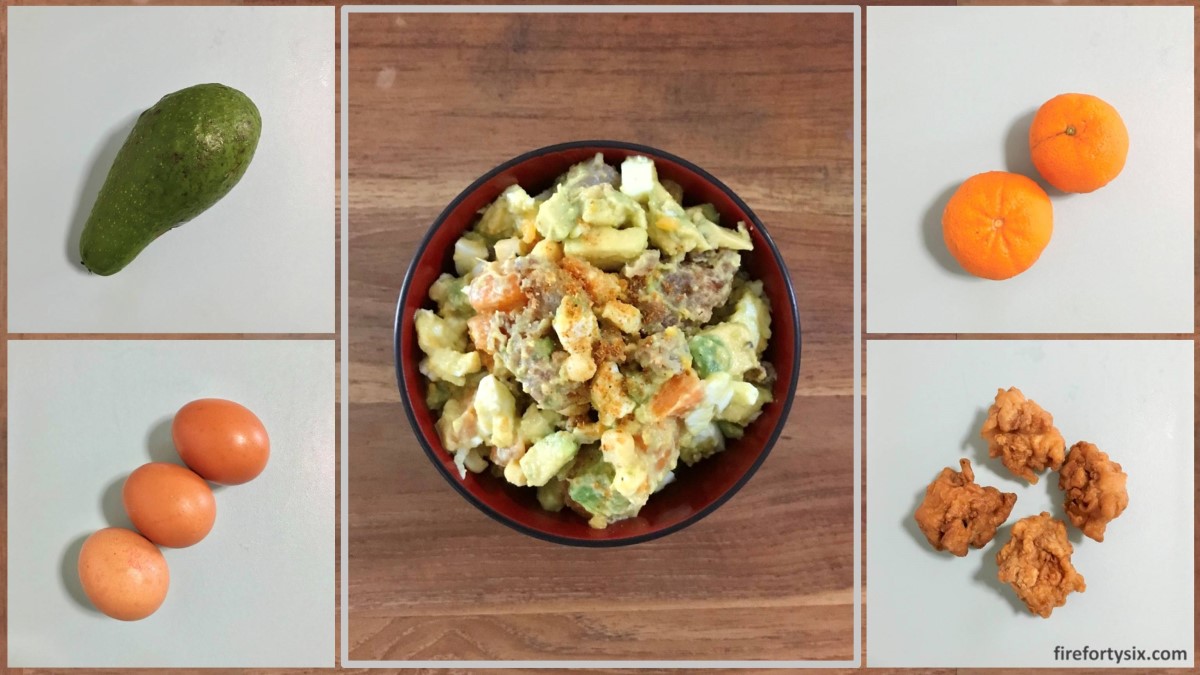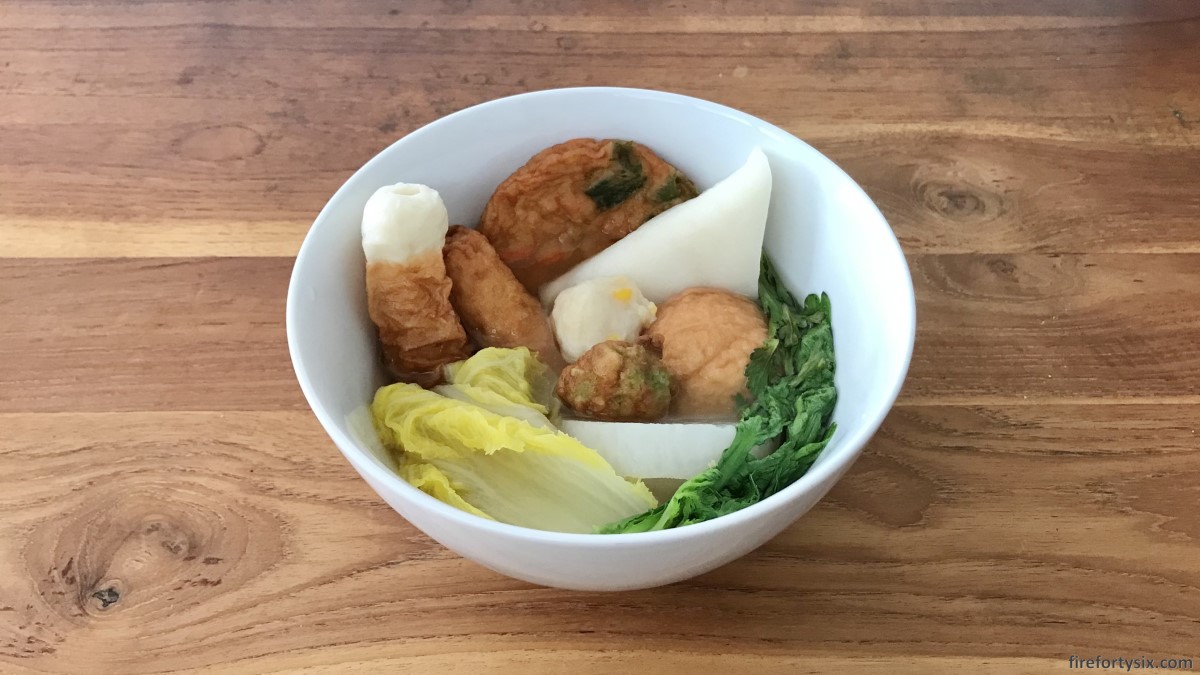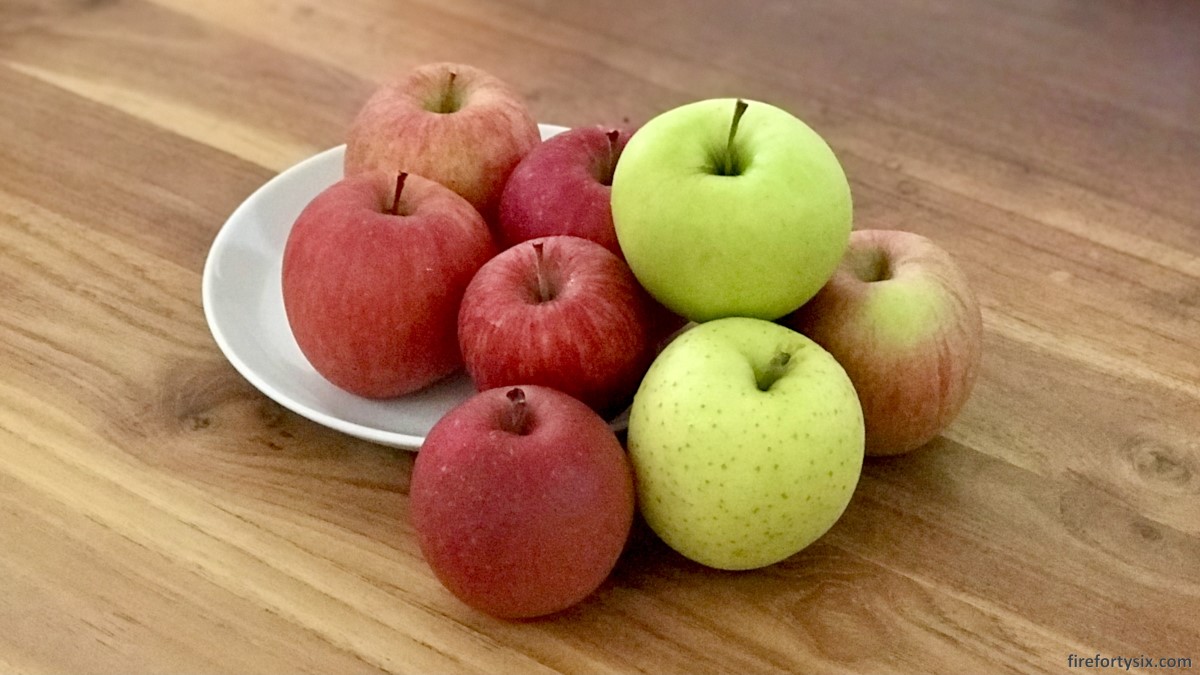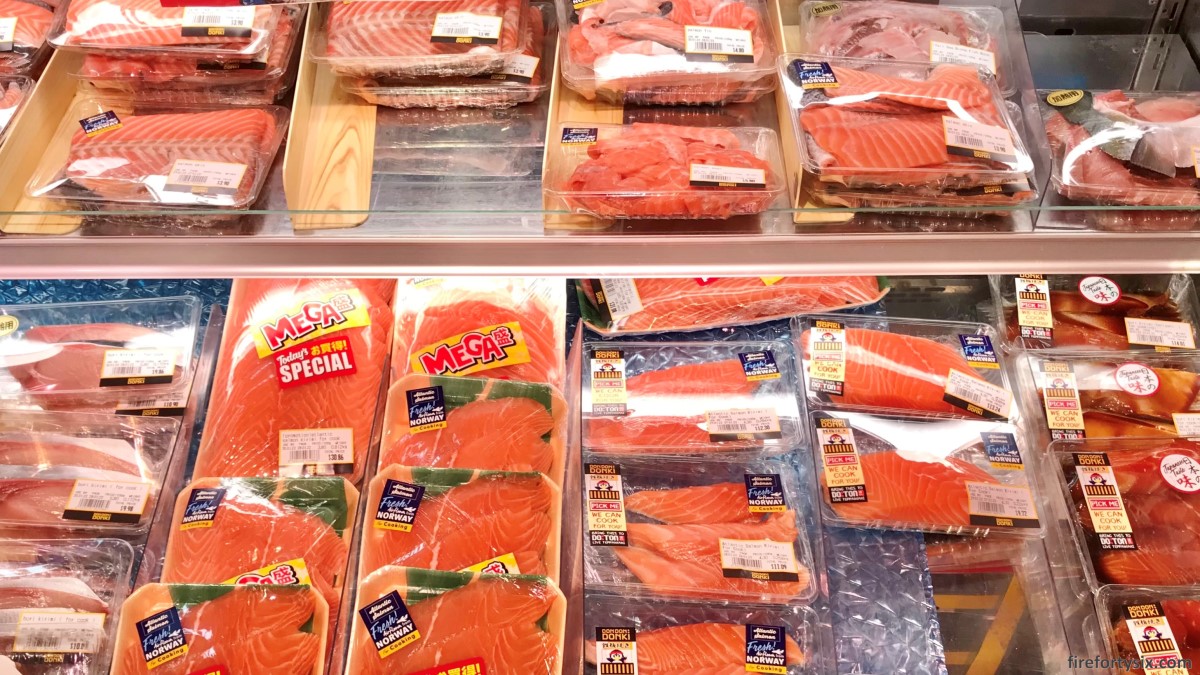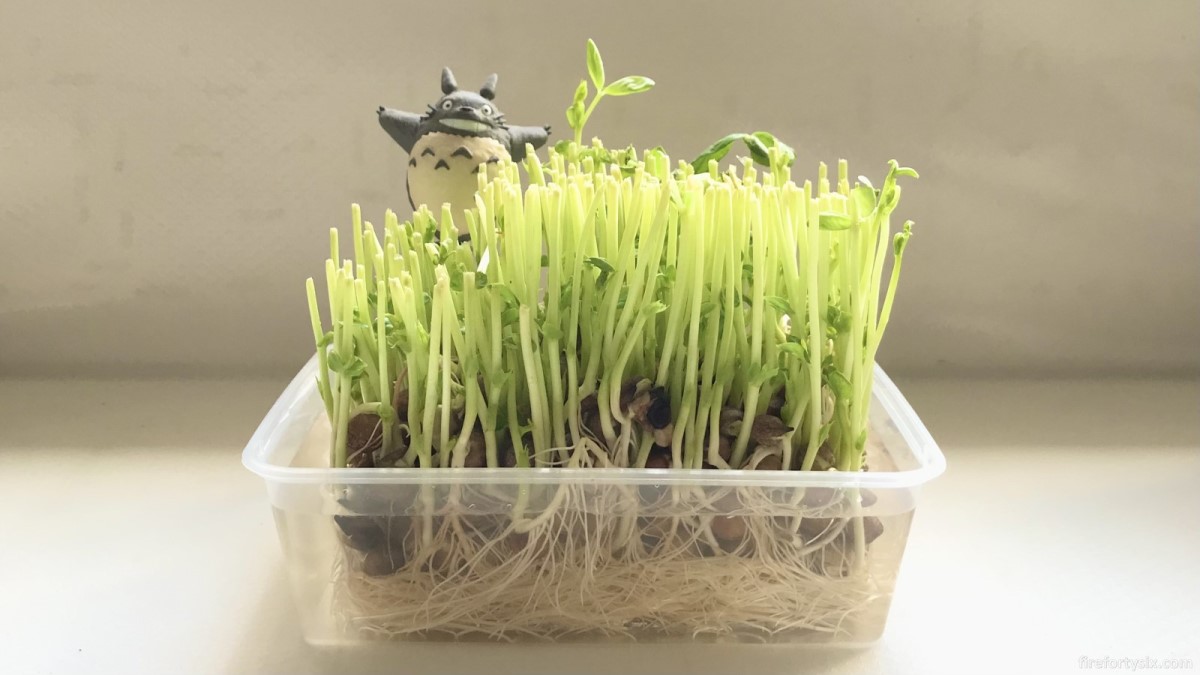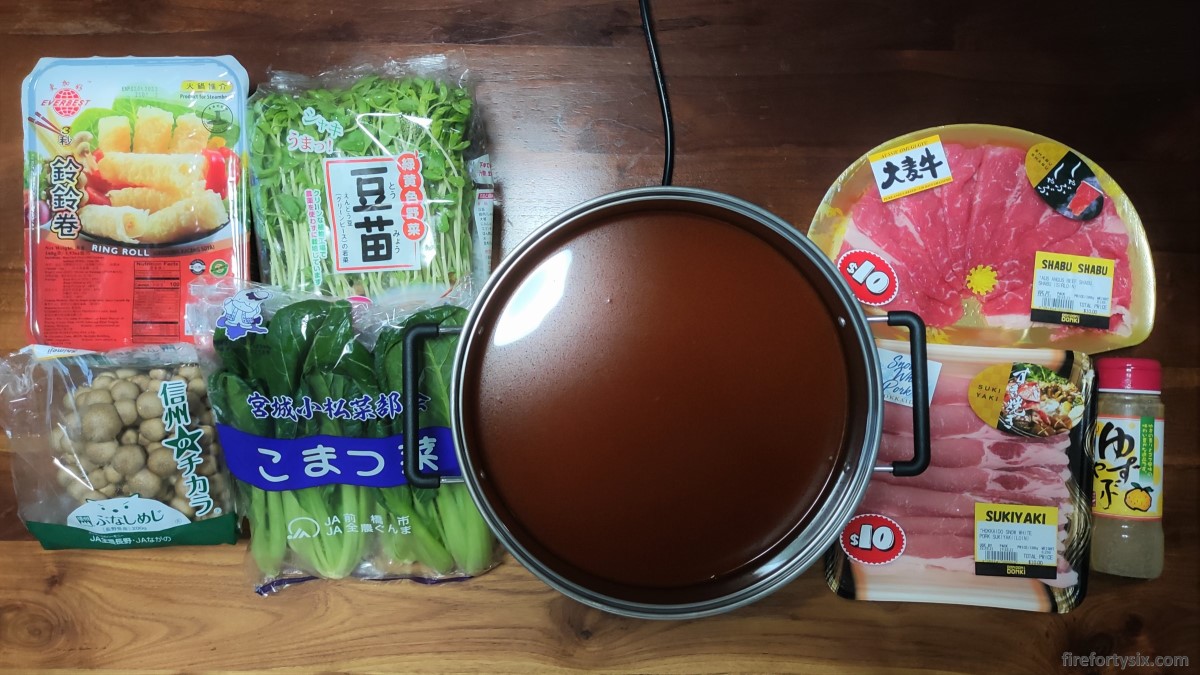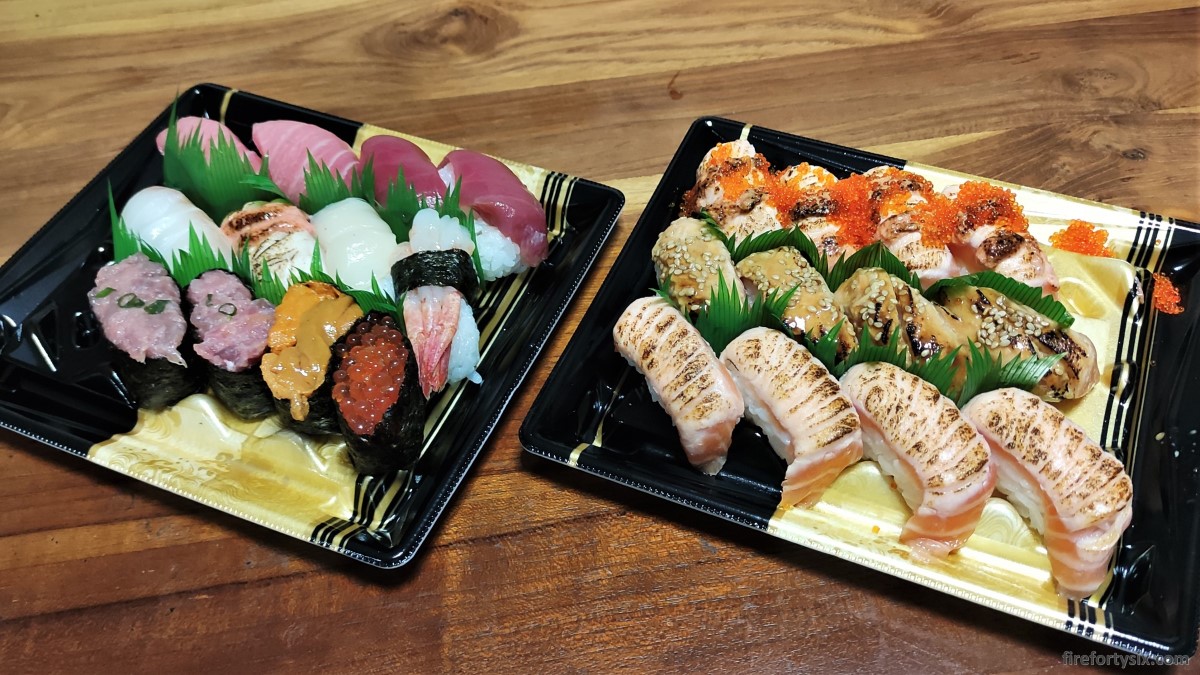If I had to rank my favourite Japanese dishes, sukiyaki would definitely be among the top. There’s just something about the combination of fatty beef, sweet & salty broth and fresh vegetables that makes it taste magical.
The sukiyaki we’ve eaten in Japan have all been great, but our number one pick has to be Asakusa Imahan (淺草今半) in Asakusa, Tokyo.
Prices there can get exorbitant during dinner and can easily exceed ¥20,000 per person, depending on the grade of wagyu chosen. The trick is to go during lunch, where a similar meal can be had for 5x less.
It’s something that the local obaasans and ojiisans know all too well. You can find them queuing half-an-hour before opening time, so that they can enjoy a luxurious lunch at a fraction of the usual cost.
A return trip to Tokyo is on the cards, but unfortunately not in the immediate future. So, when my sukiyaki craving hit a couple of weeks back, we did the next best thing.
Armed with photos from our 2017 lunch at Asakusa Imahan as a guide, we headed down to the Don Don Donki at Orchard Central to shop for ingredients.
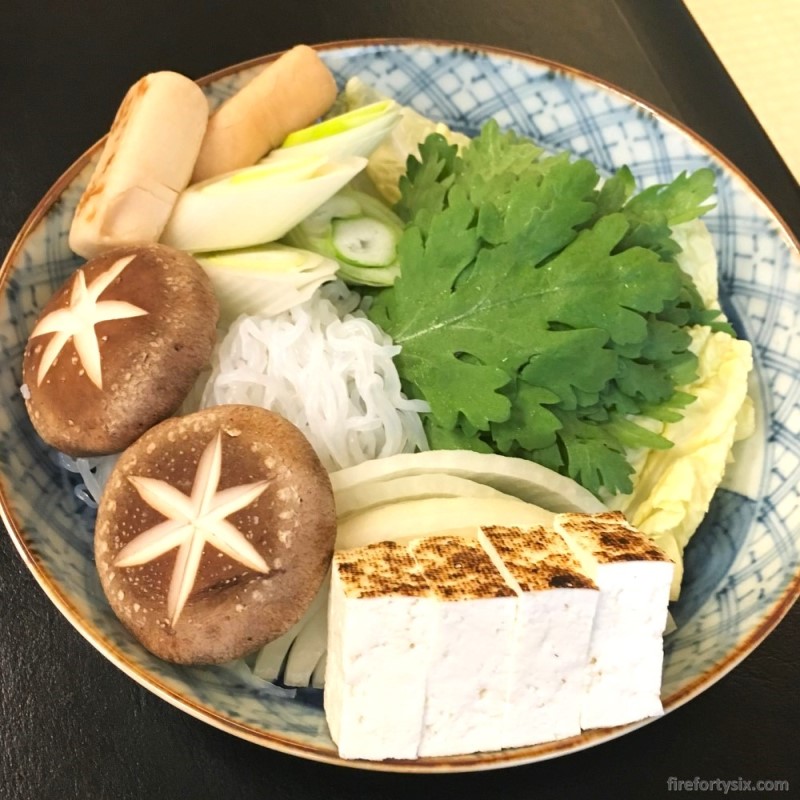
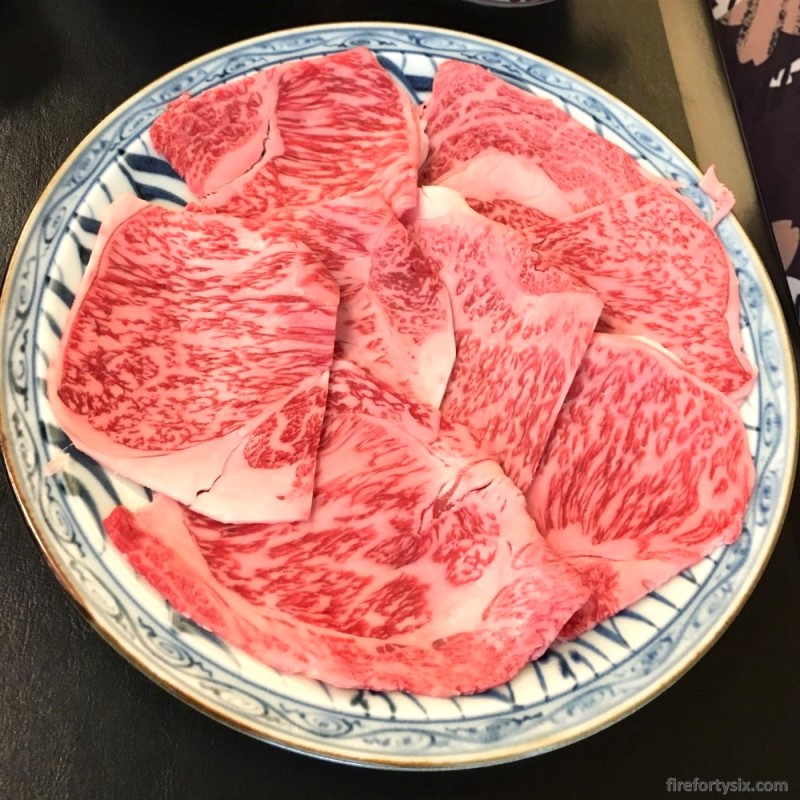
The plan was not to faithfully replicate our previous meal, especially given the prohibitively expensive cost of high-quality Kobe beef in Singapore.
But since Donki is a Japanese chain store grocer, we were confident of sourcing the necessary ingredients at reasonable prices.
First up, vegetables. Or more accurately, everything else except beef. Specifically, two stalks of negi, a half head of hakusai, a packet of firm tofu and a bag of shiitake mushrooms.
Sticking to the theme, we chose items that were imported from Japan. They weren’t the cheapest option, but neither were they overly expensive.
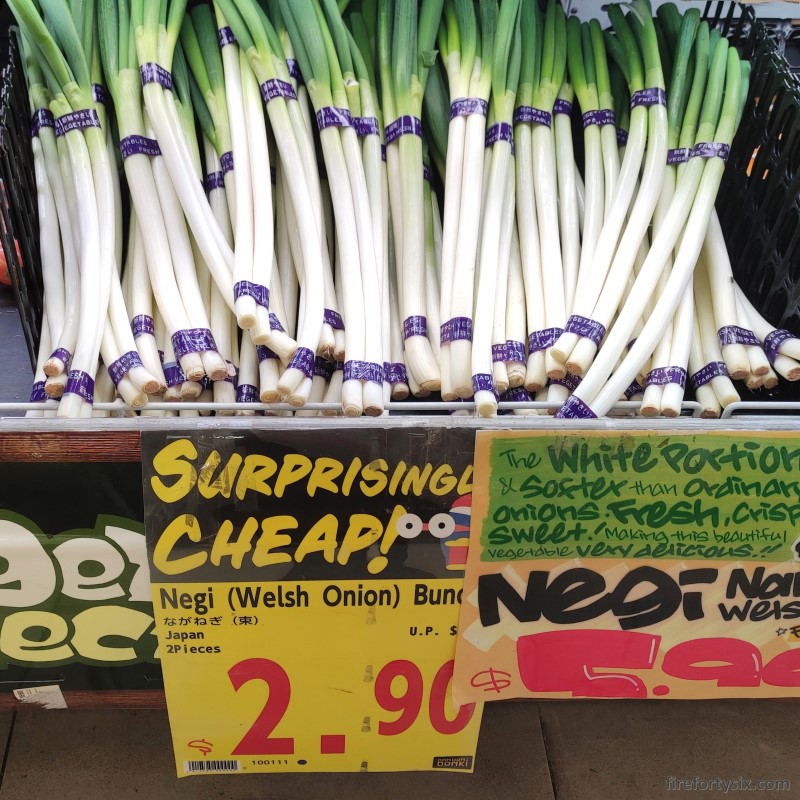
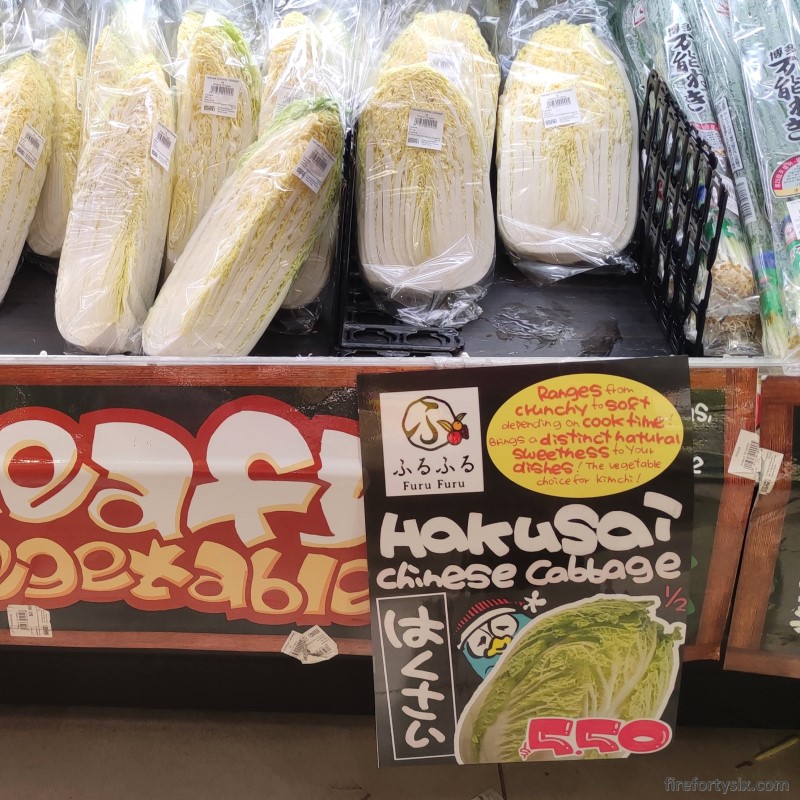
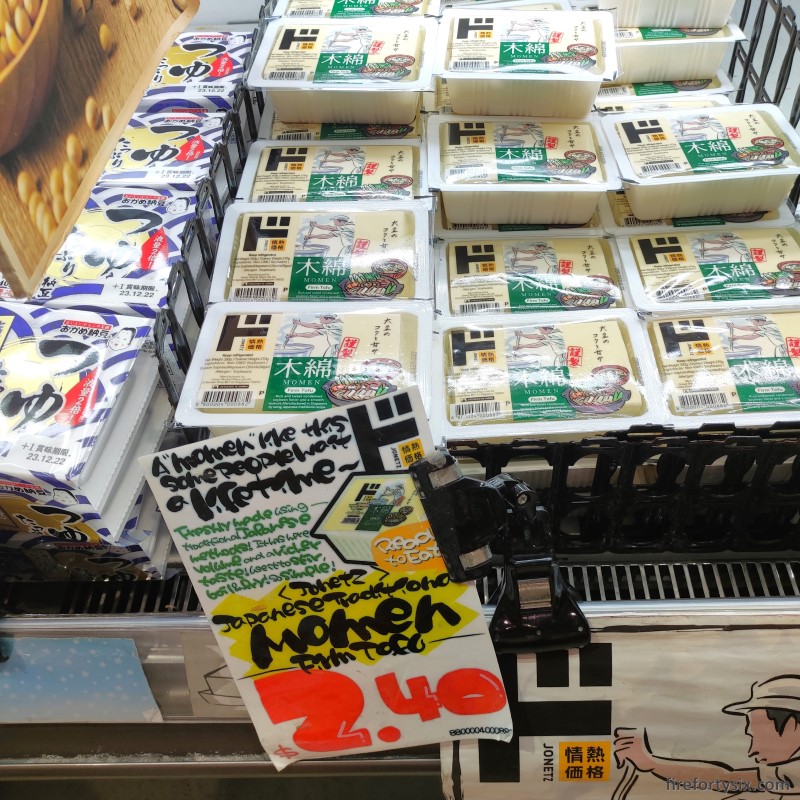
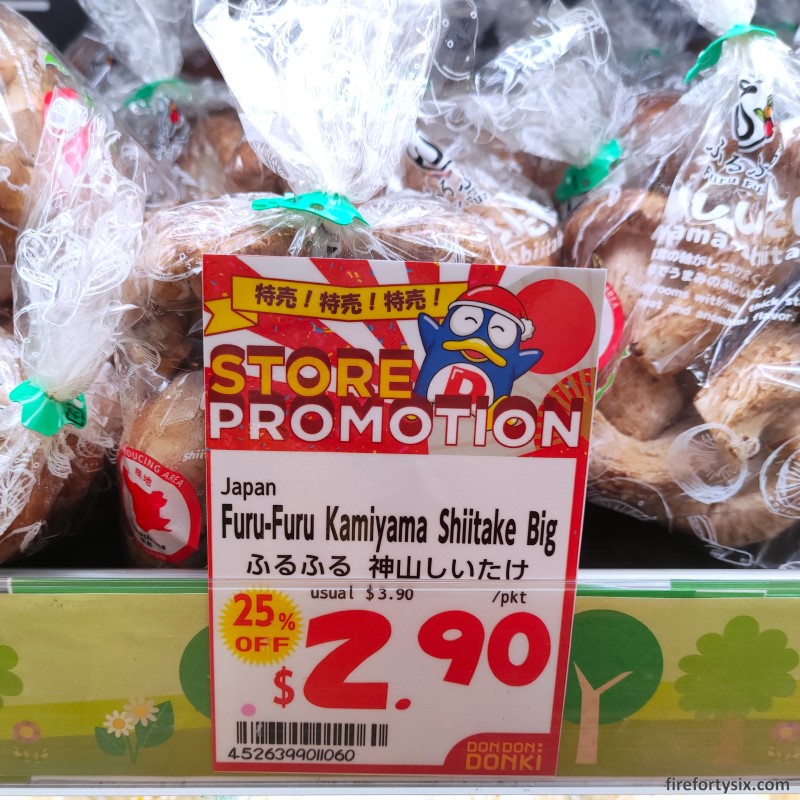
To switch things up a bit, some of the other ingredients were replaced. Gobou was added to impart earthiness, and toumyou for a touch of grassiness to cut the fat.
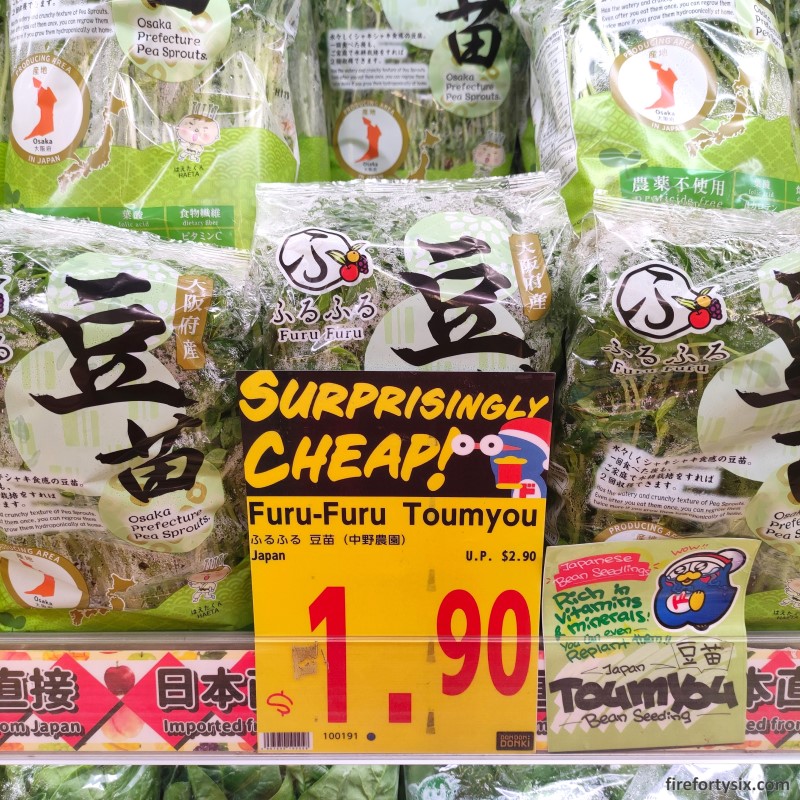

The Wife had found some online recipes for homemade sukiyaki broth, but all of them required sake. I had a healthy stash of junmai daiginjo in our fridge, but felt that they were too good to be used for cooking.
We were sure that they would be available at Donki, and true enough, there were plenty of options on the shelves.
Eventually, we went with a decent-sized bottle from Ningyocho Imahan, simply because it had Imahan (今半) on the label. There was a premium version at a higher price from the same manufacturer, but we picked the cheaper one.
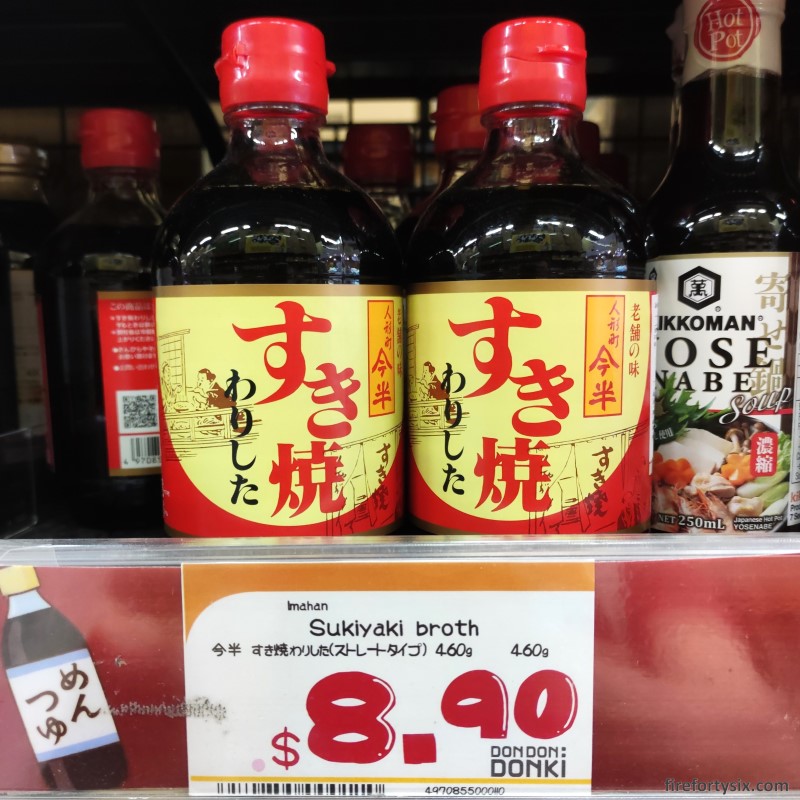
When it comes to beef at Donki, we typically go for the S$9.90 for 300gm packet of beef chips. They offer good value for money and we’ve been happy with the quality so far.
They would have worked perfectly fine, but since it was the year end, we decided to treat ourselves to fancier cuts.
We could have spent S$50 for a 200gm tray of Japanese A4 wagyu, but I decided that it was overkill for a simple homecooked meal.
As we were browsing the wide selection in different chillers, a tray of well-marbled “Japanese Hybrid Beef” caught my eye. Especially since it was going for a special price of S$19.80 for 150gm.
The label indicated that it was an F1 cross breed, which ChatGPT explained was the first generation offspring of purebred Japanese wagyu with another breed. Interesting, and definitely worth a try.

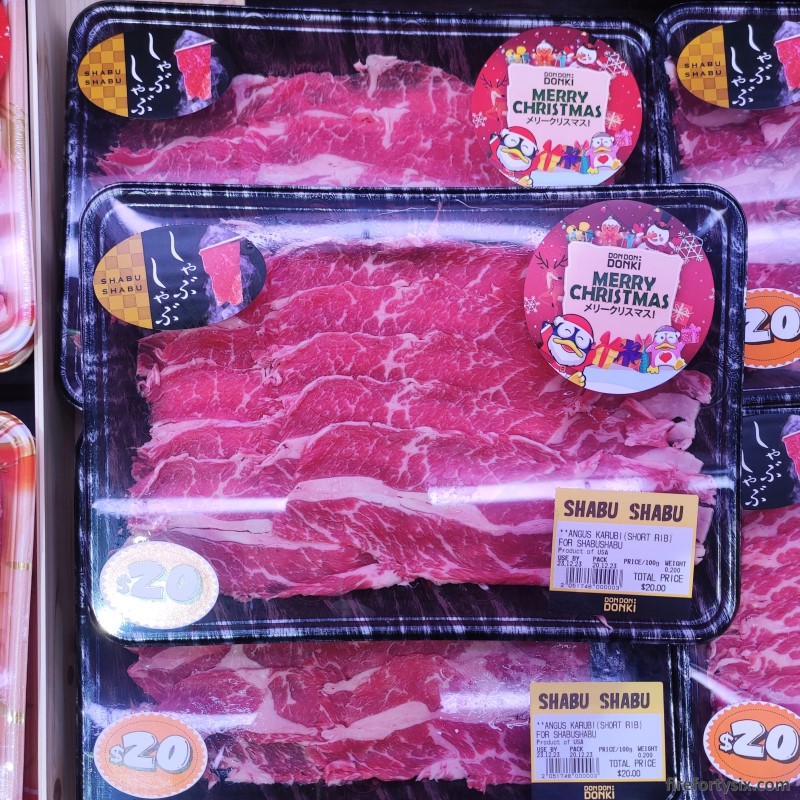
To balance out the fattiness, and because The Wife likes short rib, we also chose a 200gm pack of leaner American Angus karubi, retailing at S$20.
When we got home, our entire haul was laid out on the table, and it looked quite impressive indeed.
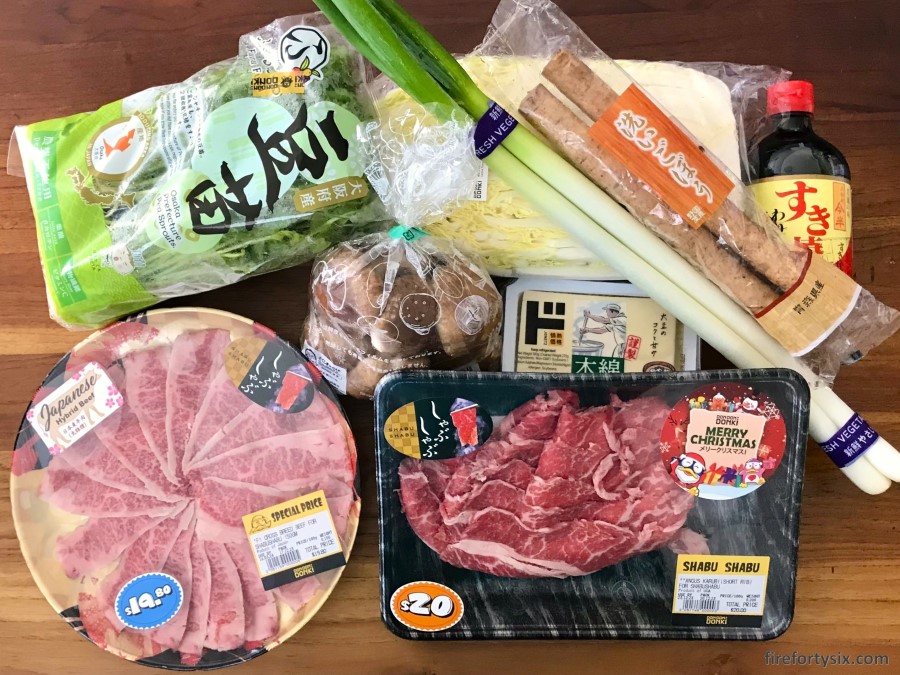
I fished out our trusty Mistral induction cooker from storage, cleaned and set it up on our dining table. In parallel, The Wife chopped up the various ingredients and assembled them in the pot.
The sukiyaki broth that we bought was fairly concentrated, and we diluted a third of the bottle with an equal portion of water.
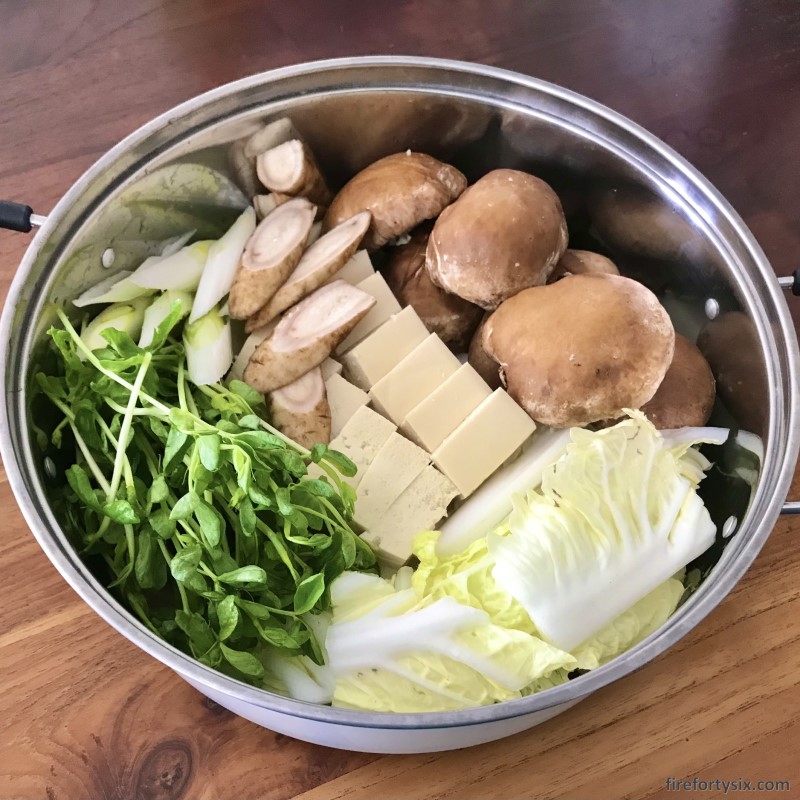
We left the induction cooker alone as it quietly did its thing. 10 minutes later, the broth started bubbling and it was go time!
The two trays of beef were quickly unwrapped, and we started cooking each piece individually. They were all thinly sliced, and took just a few seconds to reach a beautiful pink.
Choosing different cuts of meat turned out to be a good idea. It allowed us to appreciate and enjoy the different textures and flavours as we alternated between the two.
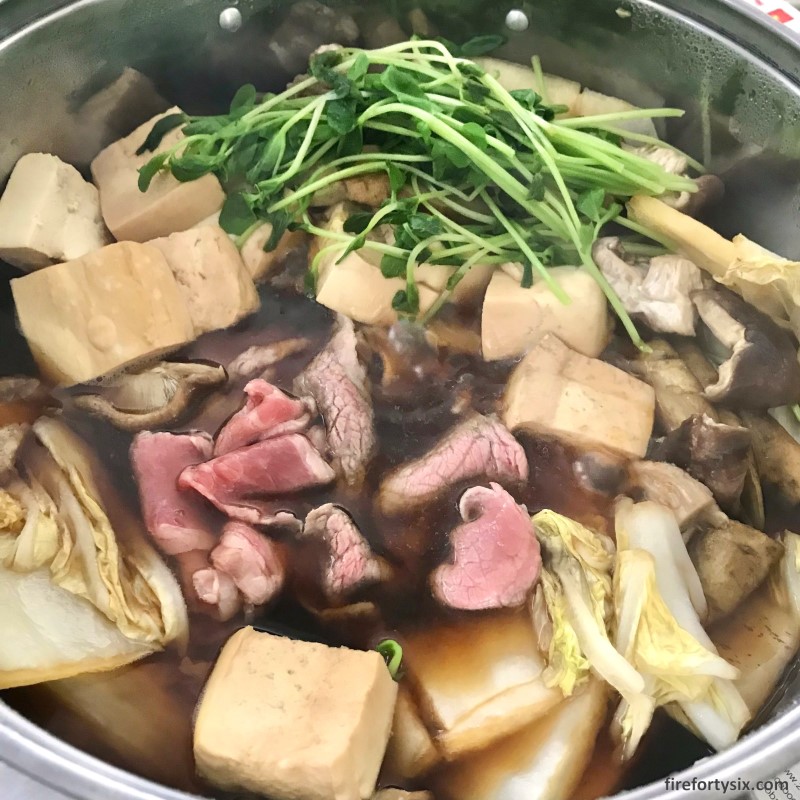
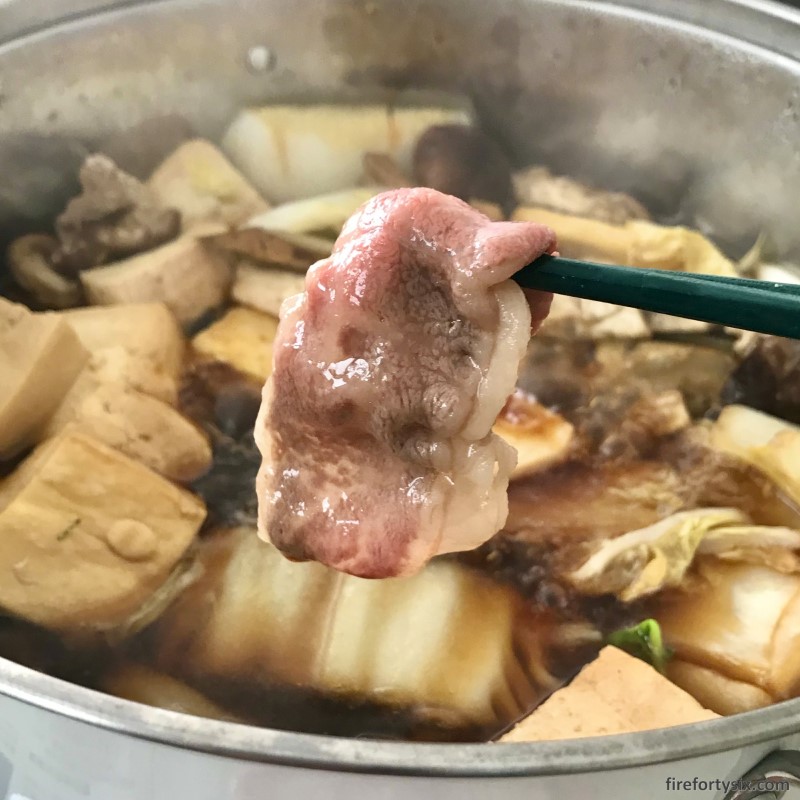
As you would expect, the well-marbled F1 cross breed was soft, rich and fatty. And while it wasn’t as luxurious as the Kobe beef we had at Asakusa Imahan, I have to say that it did come fairly close.
The Angus karubi was more robust, and tasted exactly like how good short rib should. Meaty and flavourful, with a light and pleasant chewiness.
To me, both cuts were equally good, and I happily toggled between them. The Wife, on the other hand, clearly preferred the karubi and would have been happy just to have that.
When we were halfway through the meat, the rest of the ingredients had simmered enough in the broth to fully absorb the umami-ness. The hakusai and tofu were especially delicious, and provided a nice respite from the beef.
It was a cold and rainy day, and the heartwarming sukiyaki definitely hit the spot.
What was the overall damage? Well, here’s an itemised list of all the ingredients we bought at Donki, together with their respective cost.
| No. | Ingredient | Cost |
|---|---|---|
| 1 | Angus Karubi Beef (200gm) | S$20.00 |
| 2 | F1 Cross Breed Beef (150gm) | S$19.80 |
| 3 | Sukiyaki Broth (460gm) | S$8.90 |
| 4 | Hakusai (1/2 head) | S$5.50 |
| 5 | Negi (2 pieces) | S$2.90 |
| 6 | Shiitake (1 packet) | S$2.90 |
| 7 | Gobou (1 piece) | S$2.50 |
| 8 | Momen Tofu (1 packet) | S$2.40 |
| 9 | Toumyou (1 bag) | S$1.90 |
| TOTAL | S$66.80 |
Naturally, we finished all the beef in one sitting. But since we didn’t use up all of the other ingredients, the total cost of our meal was probably closer to S$50 for the both of us.
Not bad, considering that it included 350gm of good quality American and Japanese beef.
I was curious what the sukiyaki lunch set at Asakusa Imahan was going for nowadays, fully expecting inflation and increased taxes to take their toll.
When we last ate there in 2017, the Sukiyaki Lunch Gozen was priced at ¥3,800++ per person.
Service charge was 10%, Japanese consumption tax then was 8%, and S$1 was equivalent to around ¥80. Therefore, we would have paid ¥9,000 (or S$112) for the both of us.
That very same lunch set is now ¥4,950+ per person, or ¥4,500++ if the current 10% tax is not included upfront. Factoring in tax and service, the current total would be ¥10,900, a whopping 21% increase.
However, given the massive 30+% depreciation of the Japanese yen in recent years, S$1 is now worth about ¥108, resulting in a Singapore dollar price of S$101.
Would we go back to Asakusa Imahan the next time we’re in Tokyo?
Absolutely!
Despite our homecooked version costing half the price, it paled in comparison to the meal we had in Asakusa.
Not just in the quality of the beef, but also in the overall experience of dining on a tatami floor, served by elegant kimono-clad waitresses.
But until we plan a trip back, it’s good to know that we can still always make a grocery run to Donki, fire up our induction pot and whip up a decent alternative at home.
